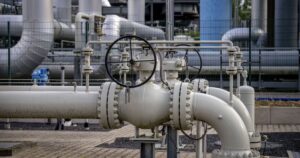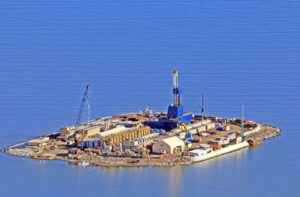
The cost of 12 lean dishes for the 2025 Christmas table is 913.57 UAH, which is 11% more than last year, according to the Ukrainian Agribusiness Club (UACB)
“Food prices on the eve of the Christmas holidays show mixed trends: thanks to a record drop in vegetable prices, the cost of some traditional dishes has decreased, but the total cost of the Christmas table has increased due to the rise in prices for fruit, fish, and groceries,” the association explained.
Analysts noted that a distinctive feature of this winter season was “vegetable deflation.” Thanks to a good harvest, prices for vegetables used in borscht have fallen significantly: cabbage has fallen in price by 73%, carrots by 63%, onions by 58%, potatoes by 54%, and beets by 51%. This has led to significant savings in the preparation of dishes such as cabbage dumplings (their cost has fallen by 47%), potatoes with garlic (-40%), and vinaigrette (-18%). Even lean borscht will cost 18% less this year than last year.
At the same time, the main symbols of the Christmas table – kutia and uzvar – have noticeably increased in price, according to the UACB. The kutia index rose by 37%. This is due to the rise in prices of all its components: nuts jumped in price by 60%, honey by 40%, and poppy seeds and raisins by more than 30%. The ingredients for uzvar led the way in terms of price growth: prunes rose in price by 168%, dried pears by 140%, and apples by 110%, which led to a 150% increase in the price of the drink.
Fish dishes also became more expensive: the cost of herring rose by 24%, and fish (hake) for baking – by 25%. In addition, the final cost of dishes is influenced by sunflower oil, which is a basic element of the Lenten table and has risen in price by 22% over the year.
As for meat dishes (for those who do not observe Lent or are already preparing for the New Year), their preparation is more expensive than last year. Baked pork neck will cost 7% more (330 UAH/kg). Lard is outpacing the growth in meat prices – over the year, the product has increased in price by 16% and costs 272 UAH/kg. The cost of meat borscht has increased by 27%, reaching 196 UAH, with pork ribs accounting for over 60% of the price (119.5 UAH per 500 g). Chicken prices are rising due to the increase in feed costs, while pork prices are stabilizing due to imports.
Sliced cheese will be one of the most expensive items on the New Year’s table—700 UAH/kg, which is 40% more than last year. Despite the general trend of declining wholesale prices for raw milk, producers are maintaining high prices for cheese and butter due to expensive energy resources. Eggs, which are essential for Olivier salad, rose by 10% compared to the same period last year and reached 81.6 UAH per dozen, according to the UACB.

The vast majority of European countries in 2022-2024, before President Donald Trump returned to the US presidency in January 2025, bought much more oil and gas from Russia than they provided support to Ukraine, said US Deputy Secretary of State Christopher Landau.
“I knew that many of these countries had tied their energy fortunes to Russia, but I had no idea of the scale of this or how much (collectively) it overshadowed their aid to Ukraine,” he wrote on social media on Saturday.
Landau illustrated his post with a chart provided to him by the US State Department. He specified that he had requested this data in connection with his trip this week to a meeting of NATO foreign ministers, replacing Secretary of State Marco Rubio. After the meeting, Landau sharply criticized the EU countries.
According to the chart, only five of the 24 European countries provided Ukraine with financial assistance (grants and loans) that exceeded Russia’s payments for oil and gas: the United Kingdom, Denmark, Sweden, Norway, and Switzerland. In the case of Switzerland, there are no oil and gas payments to Russia, while in the case of the Scandinavian countries, they are small – up to $1 billion, with aid to Ukraine ranging from $5 billion to $10 billion (here and below are approximate figures, as the chart does not contain exact data). Overall, Denmark, Sweden, and Norway ranked 3rd, 6th, and 8th, respectively, in terms of aid to Ukraine among the 24 countries listed.
And even in the case of the UK, which paid Russia about $3.5 billion for hydrocarbons, this is still much less than the aid provided to Ukraine, which is estimated at $15 billion — the second highest figure among the 24 countries.
Finland’s aid to Ukraine and purchases of Russian oil and gas are roughly equal, while in the case of Lithuania and Latvia, oil and gas payments to Russia already exceed aid to Ukraine, according to the US State Department’s estimates. (Estonia is not included in the chart, as are other countries whose aid or hydrocarbon imports from Russia during this period were less than $1 billion.
Germany, Ukraine’s largest European donor with approximately $17.5 billion in aid, purchased $20 billion worth of Russian oil and gas in 2022-2024. The Netherlands, which ranks fourth on the list of aid with approximately $8.5 billion, imported nearly $5 billion worth of hydrocarbons from Russia.
In France, this ratio is approximately $6 billion against more than $20 billion, in Poland $5.5 billion against $12 billion, and in Italy $3 billion against $27.5 billion: this is the 10th indicator in terms of aid to Ukraine and the 2nd in terms of imports from Russia.
The absolute record holder in this regard is Turkey, whose financial support to Ukraine is difficult to estimate even at $0.2 billion, while purchases of Russian oil and gas amount to about $32 billion.
Hungary, with even smaller amounts of aid, sent Russia about $22 billion for oil and gas, and Slovakia sent about $18 billion, although its support for Ukraine can be estimated at approximately $1.5 billion.
The Czech Republic’s financial assistance to Ukraine in 2022-2024 is about $1 billion, according to the US State Department’s estimates, which is also much less than the volume of Russian hydrocarbon purchases, which amounted to about $15 billion. Spain looks better in terms of these indicators
— $2 billion versus $12 billion — as does Bulgaria — $0.5 billion versus $9 billion.

According to the Serbian Economist, Serbia has not received a special license from the U.S. OFAC to continue the work of the company NIS, which has fallen under U.S. sanctions. This was announced by Serbian President Aleksandar Vucic. He also said that Serbia has decided to completely shut down the Pančevo refinery.
Since November 25, the NIS refinery has been operating in a reduced circulation mode due to a shortage of oil. Vucic noted that NIS will decide when to complete the shutdown of the refinery.
Earlier it was reported that the Serbian parliament is preparing an amendment that would allow Serbia to become the owner of NIS. A possible sale of 56.15% of NIS shares to Hungarian partners is also being considered.
NIS, a subsidiary of Gazprom Neft, was included in the US SDN List in 2025.
https://t.me/relocationrs/1865

According to Serbian Economist, Serbian President Aleksandar Vučić confirmed that the NIS oil refinery in Pančevo has been switched to reduced circulation mode due to oil shortages caused by US sanctions and uncertainty surrounding the OFAC license.
Vucic said: “The plant has not been shut down yet, but has been put into circulation mode. This is a lower operating mode compared to normal.”
According to Vucic, without the extension of the OFAC special license allowing NIS to operate, the refinery will be completely shut down in about four days.
He also said that he had offered the government another 50 days to find a buyer for NIS, rather than nationalizing it.
According to NIS, the process is being carried out in accordance with Serbian law, internal regulations, and “strict environmental and safety standards.”
The plant will be maintained in a state ready to start up as soon as access to oil becomes available.
At the same time, NIS emphasizes that
fuel supplies to the domestic market in Serbia are currently running smoothly thanks to pre-formed reserves.
The company hopes for a speedy return to normal operations at the refinery, which is “important not only for Serbia but also for regional markets.”
It is noted separately that the shutdown of the refinery will also affect HIP Petrohemija, which will also begin preparations to halt production.
In early 2025, NIS, a subsidiary of Gazprom Neft, was added to the US SDN list. OFAC issued a special license until February 13, 2026, allowing shareholders to negotiate a change in ownership structure.
Last week, NIS submitted a new request to OFAC for a special license to ensure normal operations during the negotiation period.
Energy Minister Dubravka Jedovic-Handanovic said that the Russian owners had agreed to sell 56.15% of NIS to a third party, but the name of the potential buyer has not been disclosed – “negotiations are underway between serious companies.”
NIS is the only company in Serbia engaged in oil and gas exploration and production. It owns a large oil refinery in Pančevo, dominates the country’s petroleum products market, and has a network of more than 400 gas stations in Serbia, Bosnia and Herzegovina, Bulgaria, and Romania.
Since 2009, according to the company, more than €900 million has been invested in the modernization of the Pančevo refinery.
If the OFAC license is not renewed and oil supplies are not resumed, Serbia may be left without its own refining capacity and become more dependent on imports of finished petroleum products. Not only energy security but also the industrial chain (NIS + HIP Petrohemija) will be under threat.
A successful deal to withdraw Russian capital and bring in a third investor could preserve the refinery as a regional processing center and reduce the risk of sanctions.
For Serbian Economist, this is a key case for the coming weeks: the OFAC decision and the parties’ willingness to close the NIS deal will determine the state of the Balkan oil market as early as 2026.

State-owned Pakistan Petroleum Ltd. will build an island to create a launch pad for accelerating oil and gas exploration. The artificial island will be located approximately 30 kilometers off the coast of the southern province of Sindh, near the city of Sajawal, PPL’s chief executive officer for exploration and core business development, Arshad Palekar, told Bloomberg. According to him, this will prevent tidal waves from interrupting round-the-clock geological exploration work.
This project, the first of its kind for Pakistan, is based on the experience of Abu Dhabi, where artificial islands for drilling have been successfully built, Paleekar said.
Construction of the island will be completed in February, and operations will begin immediately after that, he added. The company plans to drill about 25 wells.
Drilling operations in Pakistan are gaining momentum after US President Donald Trump expressed interest in the country’s “huge oil reserves” in July. Since then, offshore exploration licenses have been issued to local companies PPL, Mari Energies Ltd. and Prime International Oil and Gas Co.

British company Pennpetro Energy Plc (PPP) has announced the signing of the main terms for the acquisition of a 100% license for oil and gas exploration in the Limnytskyi area in Ivano-Frankivsk region through the Polish holding company Target, which was recently established for this purpose.
“The license being acquired by the company is a little-explored, large-scale and highly promising project, the development of which is expected to make a significant contribution to strengthening Ukraine’s energy independence and sovereignty,” PPP said in a stock exchange announcement.
The company intends to immediately recommission one of the previously abandoned wells and conduct 3D seismic surveys before starting to drill a second well in the near future, which is expected to have a high probability of success.
The 172 sq km Limnitsky oil and gas field is located in the Carpathian Basin, where more than 100 oil and gas fields have currently been discovered.
“Obtaining the basic terms of the license for the Limnitsky field in Ukraine is a turning point for our business. It adds an extremely promising asset to our growing portfolio and opens up the opportunity to develop this field,” said PPP Chairman Stephen Lunn.
According to him, Pennpetro Energy’s capital requirements associated with this license are minimal, and the company has significant growth potential.
According to NADRA info, a special permit for oil and gas exploration and production in the Limnitskaya area was issued in 2007 to Geoposuk LTD, which remains an active subsoil user after the recent cancellation of the order of the State Service of Geology and Subsoil of Ukraine to revoke the permit.
In April 2023, Derzhgeonadra filed a lawsuit against Geoposuk LTD in the Ivano-Frankivsk District Administrative Court, demanding that the special permit for subsoil use be revoked. The basis for this was that among the ultimate beneficial owners of the company there is allegedly a citizen of the Russian Federation.
In July 2023, the court of first instance upheld the lawsuit, recognizing the permit as invalid, and in February 2024, the Eighth Administrative Court of Appeal left this decision unchanged. In compliance with the court decisions, the State Geological Service issued an order on February 15, 2024, to revoke the permit.
However, on April 30, 2025, the Supreme Court overturned the decisions of the lower courts, recognizing that the revocation had been carried out in violation of the law, as a result of which Gosgeonedra revoked the previous order on May 5, 2025.
Pennpetro Energy Plc is a public company registered in 2016 in England and Wales. The company is engaged in oil and gas exploration and production, focusing on onshore projects in Texas (USA), particularly in Gonzales County, where it owns rights to more than 2,500 acres. Pennpetro has a number of subsidiaries, including Pennpetro USA Corp., Nobel Petroleum LLC, and Pennpetro Greentec UK Limited.
In 2024, PPP reported revenue of approximately £0.5 million with a net loss of £8.9 million.
On October 16, Pennpetro Energy plc announced the appointment of Mauritius Kalugin as executive director and chief operating officer of the company. Until January 31, 2023, he held the position of executive director and chief operating officer of the Naftogaz group.